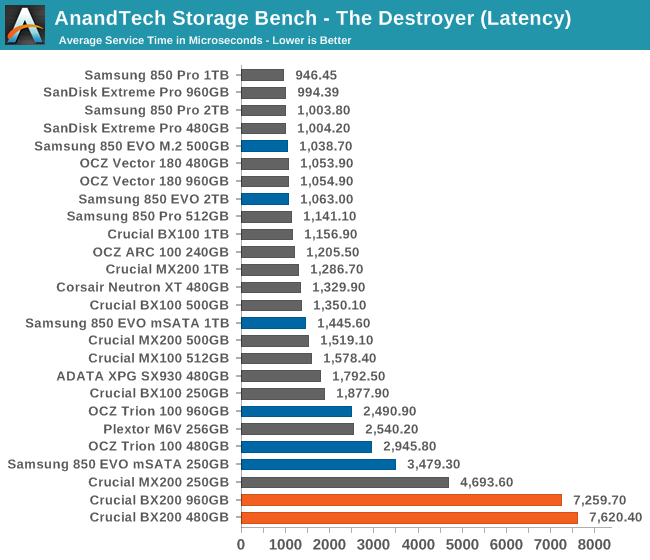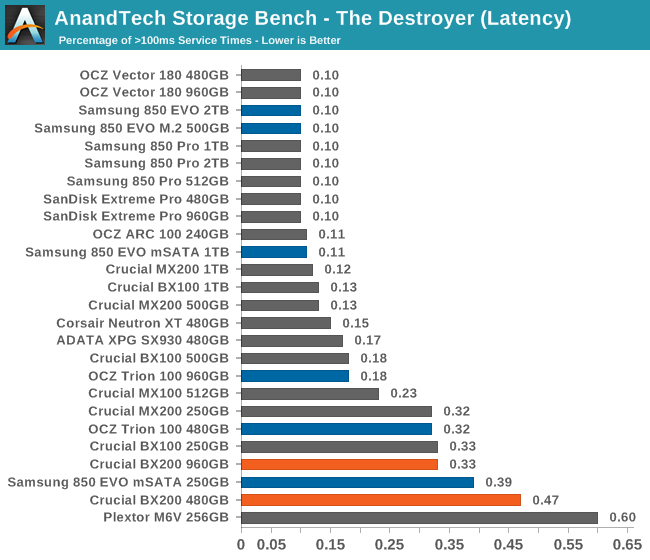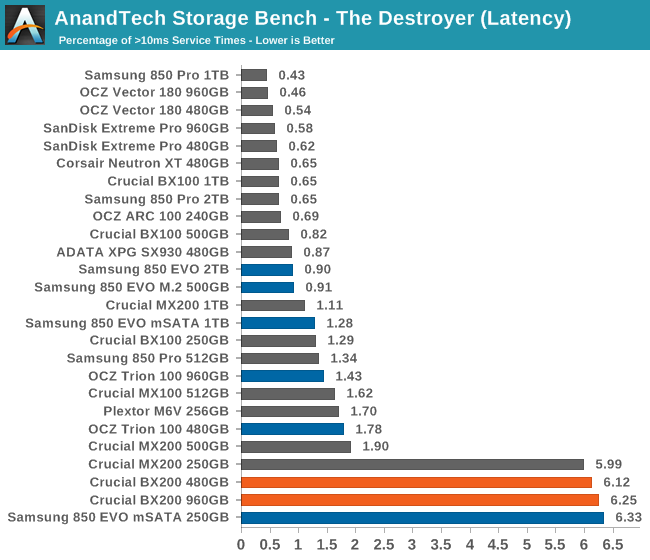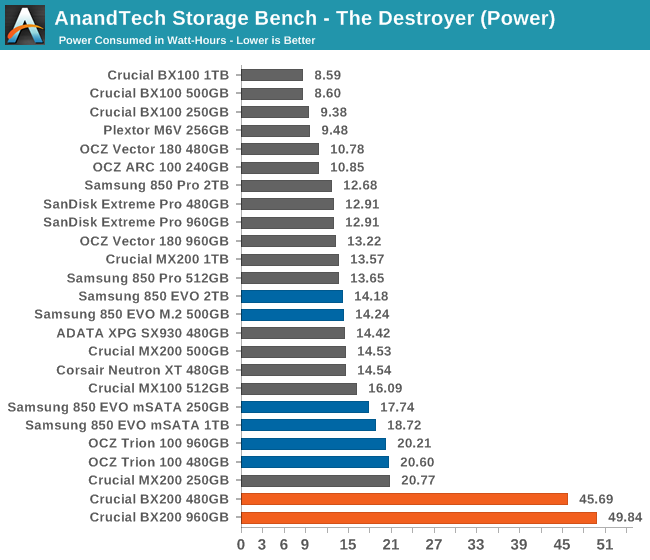The Crucial BX200 (480GB & 960GB) SSD Review: Crucial's First TLC NAND SSD
by Billy Tallis on November 3, 2015 9:00 AM ESTAnandTech Storage Bench - The Destroyer
The Destroyer is an extremely long test replicating the access patterns of heavy desktop usage. A detailed breakdown can be found in this review. Like real-world usage and unlike our Iometer tests, the drives do get the occasional break that allows for some background garbage collection and flushing caches, but those idle times are limited to 25ms so that it doesn't take all week to run the test.
We quantify performance on this test by reporting the drive's average data throughput, a few data points about its latency, and the total energy used by the drive over the course of the test.

The BX100's performance on The Destroyer isn't dead last, but it underperforms for its capacity.

Average service time is startlingly high and is close to a hard drive's seek time.


The frequency of performance outliers is in line with the other two low performers on this test, indicating that the BX200's performance doesn't stutter any more often, but it pauses for longer periods of time when it does stutter.

Higher power consumption is to be expected from a drive using TLC NAND, but the BX200 consumed more than twice the energy over the duration of The Destroyer than any of the other drives, and more than five times as much as the BX100. The BX200 didn't take vastly more time to complete The Destroyer, so it was clearly not making good use of idle time.










85 Comments
View All Comments
ilkhan - Tuesday, November 3, 2015 - link
If a company is going to shoot for the value proposition, they really need to beat samsung by more than 10%. Paying an extra 10% to get a really solid drive like the 850EVO is just too tempting for anyone who does even the tiniest of research before buying.You either need to be the cheapest, best name brand recognition, or fastest. Crucial isn't any of those on the 250GB market.
AnnonymousCoward - Friday, November 6, 2015 - link
Crucial has better quality and is a U.S. company. You shouldn't give Samung so much credit.squngy - Thursday, November 26, 2015 - link
What does the county of the home office got to do with anything?Samus - Friday, February 19, 2016 - link
Support. Samsungs is a joke. Fortunately the 840 Evo is the only drive they've botched. Crucial has excellent support and an excellent track record to go with their products. Shows good QA. Wouldn't expect anything else from an Intel subsidiary.zeeBomb - Tuesday, November 3, 2015 - link
What's the difference between TLC NAND to MLC or SLC NAND again?Beararam - Tuesday, November 3, 2015 - link
http://www.tomsitpro.com/articles/flash-data-cente...dakishimesan - Tuesday, November 3, 2015 - link
http://www.anandtech.com/show/6337/samsung-ssd-840...coconutboy - Tuesday, November 3, 2015 - link
slc = premium, reliable, fast, expensive, etcmlc = middle ground
tlc = cheap, lowest reliability, but Samsung has gotten tlc quality up to a level sufficient for most non-enterprise users
https://en.m.wikipedia.org/wiki/Multi-level_cell
zeeBomb - Tuesday, November 3, 2015 - link
Okay awesome, thanks.FalcomPSX - Tuesday, November 3, 2015 - link
SLC NAND stores one bit per flash cell. MLC stores two bits per cell. and TLC stores three bits per cell.